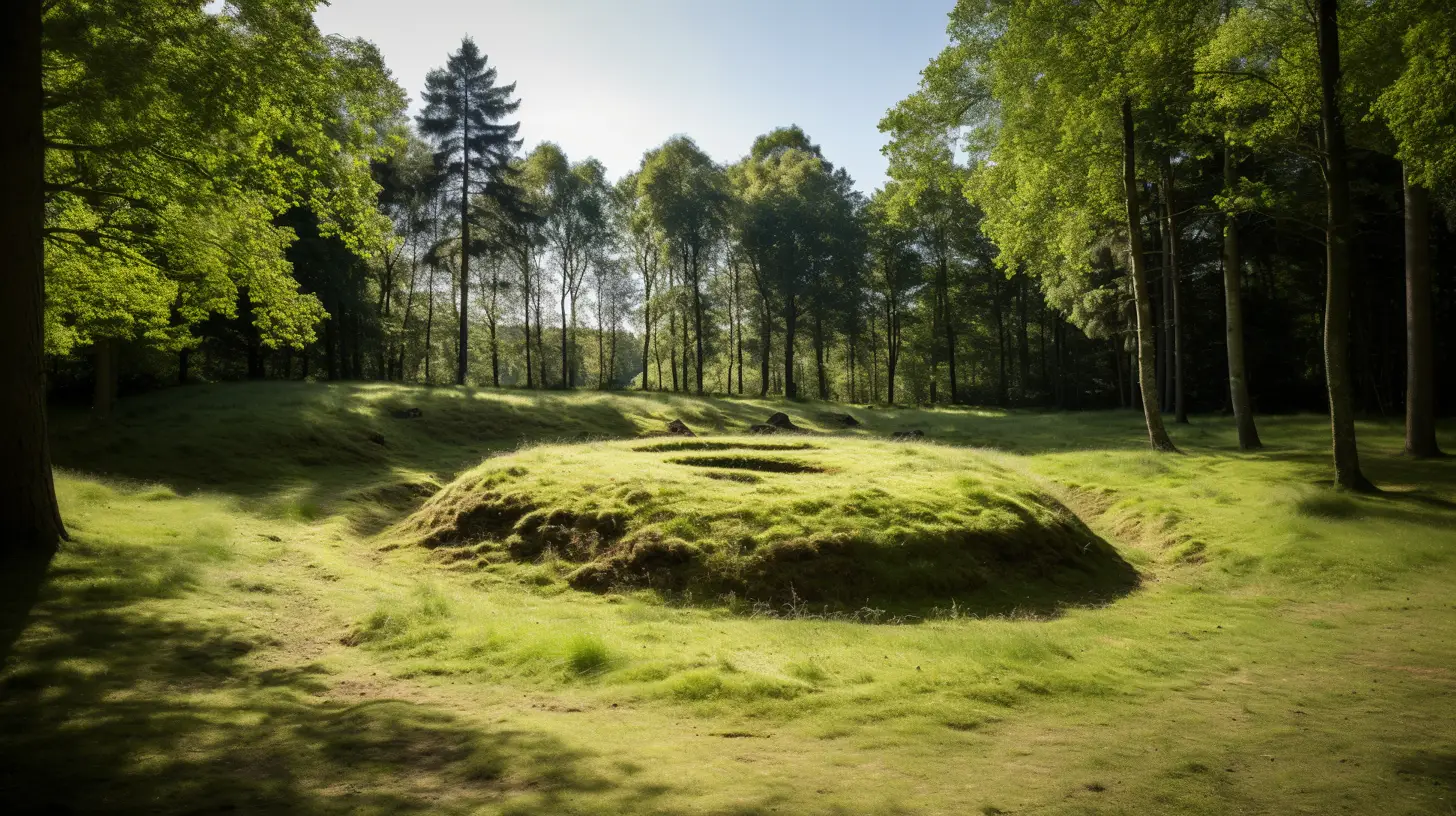
Come visit one of the most spectacular archeological discoveries in Southeastern Ohio.
Located in Question Mark, Ohio, the Infinite Circle is an internationally important Historic Landmark built by the ancient indigenous Hopewell culture of Ohio (200 BC – 500 AD). It is a perfectly circular mound that is believed to have been created as a ceremonial site for funeral rites. This location appears to be one of the few dedicated specifically for internment. The burial complex is only four feet in height and is three hundred feet in diameter.
Within a thirty-mile radius, there are no fewer than fifteen other burial mound sites, which seems to suggest the Infinite Circle was part of a large complex of structures built by the Hopewell people.
One of the Infinite Circle’s most remarkable discoveries is that the burial site contained over one thousand panpipes, an indigenous musical instrument which researchers believed were used as part of elaborate celebrations and funeral rituals.
In 2005, the Infinite Circle and and nine other indigenous earthworks were selected by the United States Department of the Interior for inclusion on the United States’ Possible List of sites to be submitted to the United Nations Educational, Scientific, and Cultural Organization (UNESCO) for inscription on the prestigious World Heritage List, which will allow the Infinite Circle the opportunity to join the ranks of the Pyramids of Egypt, the Great Wall of China, Pompeii, Stonehenge, and the Taj Mahal.
The Hopewell describes a culture that is characterized by the construction of earthen mounds, often built in varying geometric shapes. The culture is also known for a sophisticated series of relationships with other indigenous tribes, from the Atlantic coast to the Rocky Mountains. The Hopewell traded for materials such as shark's teeth, copper, and shells, bringing these elements to southeastern Ohio.
During the colonial period of the 17th and 18th centuries, French missionaries and European colonists discovered the site and left the burial site intact. The site is mentioned in several maps and documents of the time, with numerous accounts by Father Jacques Blanchet, a French missionary and explorer of the time.
In the late 19th century, Harvard University archaeologist Wilbert Putnam began excavating the Infinite Circle, incorrectly attributing the site to the Adena Culture that occupied southeast Ohio from 800 BC to 100 AD. During this period, several important ceremonial objects were removed from the site and moved into a number of local and national museums, which was, unfortunately, a common practice at the time. To this day, very few of these objects have been recovered.
In 1998, Dr. Gayle Strong from the University of Ohio, re-examined the site and used radiocarbon dating to determine that the mound was actually built in 500 AD, suggesting the Infinite Circle was actually the work of the Hopewell people. Additional research is currently underway to clarify the age and contents of the Infinite Circle by the University of Ohio Archeological Department in conjunction with members of local Native American tribes.
Please join us on the second and fourth Saturday of September and October for a guided tour of the site with a member of the University of Ohio Archeological Department, beginning at 1pm.
Pets are welcome at the Infinite Circle but must remain leashed at all times as many pets have been known to go missing in the nearby woods.
Seasonal Hours (Apr. 1, 2023 – Nov. 19, 2023)